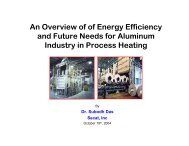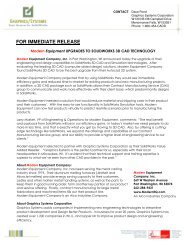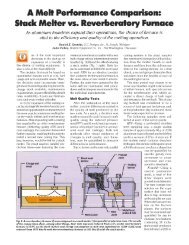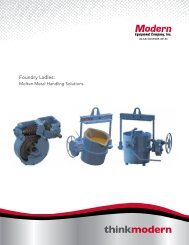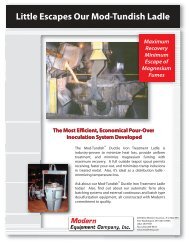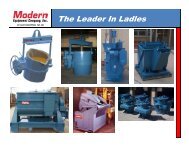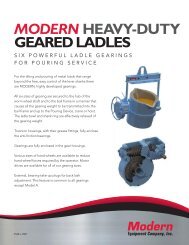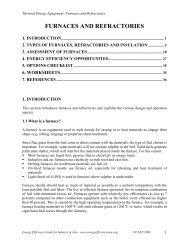ITP Metal Casting: Advanced Melting Technologies: Energy Saving ...
ITP Metal Casting: Advanced Melting Technologies: Energy Saving ...
ITP Metal Casting: Advanced Melting Technologies: Energy Saving ...
You also want an ePaper? Increase the reach of your titles
YUMPU automatically turns print PDFs into web optimized ePapers that Google loves.
elements, advanced coil insulation, and noise reduction. Wide-bodied furnaces for large capacity<br />
operations allow loading of larger scrap and give better access for slag removal.<br />
Furnace Covers: The use of furnace cover is critical to energy efficiency once the metal is<br />
molten. The simplest system is to keep a slag on the molten metal, reducing radiation losses from<br />
the top surface. Higher efficiency systems include furnace lids constructed from refractories or<br />
ceramics with low thermal conductivity, which reduces conduction and radiation heat losses.<br />
Harmonics Controls: Harmonics problem, or feedback of electrical equipment on the power<br />
source, can be caused by the high power of the furnace power supplies. These power interface<br />
problems include low-power factor, high-frequency harmonics, line voltage notching, and interharmonic<br />
distortions. Special technologies and equipments have been developed to minimize the<br />
negative influence of induction furnaces on the power supply. Computerized controls and<br />
diagnostic systems are available to provide close control of the melting operation and reduce the<br />
chances of accidental overheating. A typical control system uses information from load cells for<br />
the weight of the furnace charge and thermocouple readings for melt control optimization.<br />
Multiple-Output Power Supplies: Dual-output or “butterfly” operations utilize a single power<br />
supply and two furnaces with mechanized or electronic switching. This results in continuous and<br />
completely controllable power to two furnaces at the same time. Recently, multiple-output power<br />
units with three or more outputs have been developed. These new systems are designed with<br />
capacitive furnace isolation and include one or two AC rectifiers. Such systems are capable of<br />
achieving the high volumes of metal production previously possible only with cupolas.<br />
Refractories: Push-out lining systems use a large plug to quickly remove the old lining for easy<br />
disposal. This system reduces time and cost for periodic lining changes, lowers refractory dust,<br />
and is less likely to damage back-up lining than manual refractory removal. 31 In addition, lining<br />
life has been improved to nearly 400 heats by optimizing melt parameters, lining compositions,<br />
lining installation techniques and sintering procedures. 32 One of the major technical hurdles to<br />
operating induction furnaces for extended periods is chemical erosion of the silica linings, one of<br />
the main causes of lining failure.<br />
4.1.6 Reverberatory Furnaces<br />
Reverberatory furnaces melt aluminum with the heat that re-radiates from the hot refractory<br />
heated by the burners mounted in the roof or in a sidewall of the furnace, as shown in Exhibit 15.<br />
The molten metal is held inside the furnace at the required temperature before it is tapped out for<br />
pouring or transferred to a holding furnace.<br />
17



